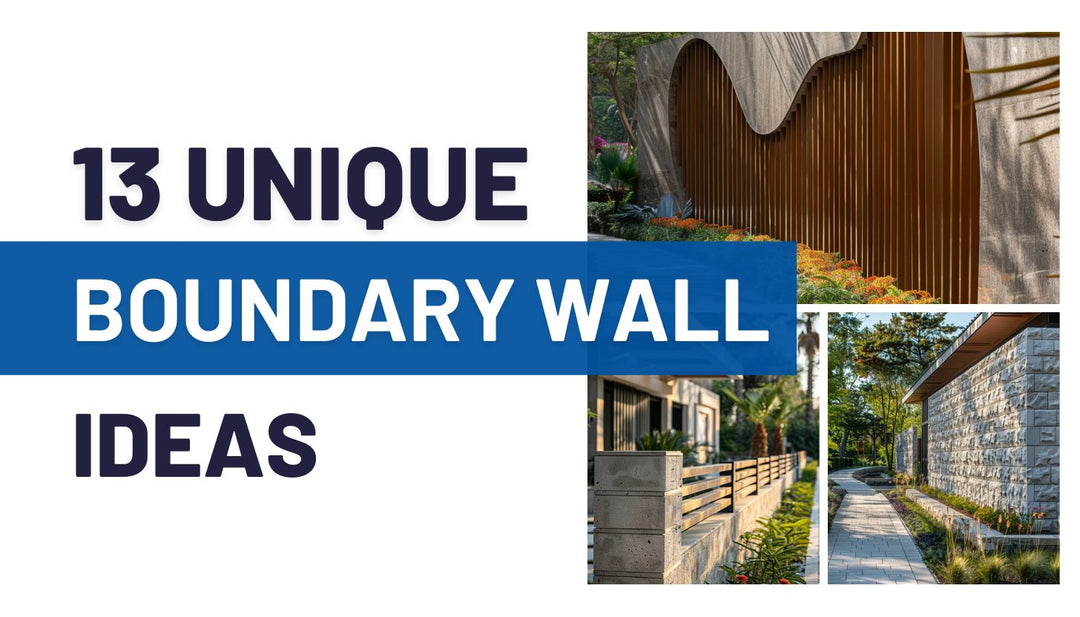Water Features in Maharashtra Homes: An Architect’s Guide to Harmony with Science, Culture, and Climate
 The allure of tranquil water features has captivated Maharashtrian architecture for generations. From ancient stepwells to modern mini-waterfalls, integrating water pays tribute to local traditions while enhancing natural beauty.
The allure of tranquil water features has captivated Maharashtrian architecture for generations. From ancient stepwells to modern mini-waterfalls, integrating water pays tribute to local traditions while enhancing natural beauty.
As an architect, thoughtfully incorporating water features allows you to create spaces that resonate culturally, sustain ecologically, and delights aesthetically. This comprehensive guide explores key considerations for achieving harmony between water elements, regional wisdom, and scientific principles in your Maharashtra-based projects.
Here are the key takeaways from the article:
- Water features have deep cultural symbolism in Maharashtra, seen in ancient stepwells and sacred tanks that remain gathering sites today. Architects should consider heritage styles and motifs when incorporating water elements.
- Strategic water features impart tangible benefits like cooling effects, climate regulation, and boosted biodiversity. They also incentivize rainwater conservation.
- Tailor form and function to complement native flora like bamboo or lotus plants. Additionally, align placement with Vastu guidelines to promote prosperity.
- Various water options suit Maharashtrian landscapes, from serene ponds to dazzling fountains. Select features aligning with lifestyle vision and spatial dynamics.
- Carefully balance water element placement to account for aesthetics as well as Vastu, sunlight, winds, and privacy considerations.
- Sustainable construction using local materials, energy-efficient pumps, and natural filtration upholds ecological wellness.
- Establish conscientious maintenance routines for healthy water and prevent costly damages from negligence.
Understanding Water Features in Maharashtra: A Cultural and Scientific Perspective
Water holds deep spiritual symbolism in India, particularly in arid regions like Maharashtra where it sustains life. Features like lakes, fountains, and wells have long served as communal gathering places and sites for rituals.
The Cultural Significance of Water in Maharashtra
Elegant stepwells (baolis) found throughout northern Maharashtra highlight the traditional reverence for water. These stone marvels with carved columns, layered terraces, and geometric symmetry reflect a distinctive architecture style. Local tales extol stepwells’ miraculous powers and sanctity.
The Chand Bawdi stepwell in Kolhapur boasts intriguing owl carvings with religious associations of wisdom and fortune. The austerity of Vishalgad Fort’s stepwell contrasts lively basins in Pune’s Pataleshwar Temple famed for sweet-tasting water.
From the splendid water pavilions of Banganga Tank in Mumbai to village wells garlanded in marigolds, water remains inextricable from Maharashtrian identity today. Learn about Rooftop Garden Design Techniques here.
The Science Behind Water Features
Beyond upholding heritage, water elements impart tangible benefits:
Cooling Effects: Strategically integrating water lowers air temperature by accelerating convection currents. As moisture evaporates, negative ions cleanse the atmosphere. Shaded water surfaces also reflect sunlight, preventing overheating.
Microclimate Regulation: Water transpired moisture into the air, helping moderate humidity levels. This fosters lush, vibrant gardens in arid environments.
Biodiversity: Water ecosystems boost local flora and fauna diversity by attracting birds, butterflies, reptiles, and more.
Local Water Conservation Practices
With Maharashtra’s tropical monsoon climate, creativity conservation during drier months is crucial. Traditional techniques like watershed management, tree-planting, and rainwater harvesting inspire sustainable modern water feature design.
Government regulations also encourage homeowners and architects to implement eco-conscious measures for using water judiciously.
Design Principles for Water Features in Maharashtrian Homes
When conceptualising water elements, consider how form and function can enhance spaces in context-appropriate ways.
Design Elements Inspired by Traditional Architecture
Incorporate classic ornamental motifs into contemporary water features. Terracotta pot cascades make artistic references to ancient stepwell edges. Design playlists of traditional music like Lavani to accompany mini-fountains. commission drifting lotus sculptures based on temple carvings.
Alternatively, replicate a heritage site’s architecture on a smaller scale through a courtyard pond flanked by pillared pergolas. Let regional creativity flow!
Selecting Features to Complement Local Flora and Fauna
Determine which water ecosystems suit surrounding flora and fauna. Koi ponds allow appreciating elegant fish while attracting birds and dragonflies. Consider native plants like bamboo or banyan trees to offer amphibians shade and bird perches.
Plant water-wise, drought-resistant plants like aloe vera, palms, and succulents in xeriscaped gardens. Consult local horticulturists to select consistent flora.
Incorporating Vastu Guidelines
Water elements south, east, or north-east zones boost positive energy (prana) and prosperity per Vastu Shastra principles. Constructed Mrityunjaya ponds named after the rejuvenating mantra negate negative effects from inaccurate architectural alignments.
Summary: Imbue form and function with meaning by reflecting heritage designs, regional nature, and Vastu wisdoms when conceptualising water features.
Types of Water Features Ideal for Maharashtra Landscapes
Numerous water feature styles suit Maharashtra’s tropical climate and traditions. Consider goals, placement, and maintenance capabilities when selecting options. Learn more about sustainable landscape practises here.
Ponds: Serene Reflections and Natural Ecosystems
Landscaping centrepieces, ponds promote tranquillity through soft gurgling. Koi and lotus ponds allow nurturing fish and aquatic plants.
Rain garden ponds with native flora naturally filter rainfall runoff to prevent flooding. Promote sustainability!
Fountains: Dynamic Displays of Water Artistry
From dancing jets to musical fountains, flowing water enthrals while masking urban noise pollution. Program sequences syncing with songs for spectacular audiovisual shows.
Incorporate traditional materials like copper vessels or vibrant pigments resembling Holi. Install mini-fountains within existing pools for low-maintenance accent features.
Waterfalls: Cascading Beauty and Soothing Sounds
Mini artificial waterfalls crafted from natural stones create white noise while separating spaces with privacy. Design cascades flowing into garden stream beds lined with pebbles.
For sleek modern aesthetics, install stainless steel or acrylic water sheers onto blank walls.
Streams and Water Walls: Tranquil Pathways and Visual Intrigue
Guide foot traffic through peaceful water channels lined with quartz or marble. Conceal water pumps within covered trenches for uninterrupted vistas.
Alternatively, water walls with concealed plumbing and drainage offer textured backdrops for living walls or artwork installations.
Summary: Tailor water options like ponds, falls and streams to spatial dynamics and lifestyleVISION while showcasing regional artistry.
Placement and Orientation: Embracing Vastu Shastra and Local Wisdom
Water elements must balance aesthetics with Vastu considerations, solar orientation and wind patterns.
Placement for Optimal Energy Flow and Appeal
As mentioned earlier, Vastu promotes water installations in suitable home zones to allow positive energy flows. Additionally, place features as enticing focal points visible from dwelling interiors without disrupting harmonious space utility.
Sun Exposure and Shading Needs
Unchecked sun exposure accelerates water evaporation and algae growth while glaring reflections disturb. Strategically place water elements with shading from structures and foliage without hindering adequate solar access for aquatic plants.
Addressing Wind Patterns
Incorporate natural wind buffers like hedges to prevent ripples and soil erosion near features. Alternatively, limit heights for rooftop cascades and fountains in windy zones.
Privacy Considerations
Water components also increase humidity and some maintenance tasks demand privacy. Discreetly position features away from lot boundaries or bedrooms unless intended as accents. Consider adding fences or hedges to establish intimate spaces without isolation.
Construction and Maintenance Considerations for Sustainable Water Features
Choose durable, sustainable materials and equipment for water features. Establish maintenance routines upholding water conservation.
Selecting Sustainable Construction Materials and Techniques
Sourcing local materials like regional timber or stone reduces transport pollution. Opt for non-toxic natural finishes over paints containing volatile chemicals. Introduce on-site water treatment systems relying on biological processes for healthy, chemical-free water. Use non-invasive installation methods preserving existing greenery.
Water Efficient Pumps and Filtration Systems
Seek ENERGY STAR certified energy and water efficient pumps circulating overflow back into features. Incorporate smart weather-based timers and sensors turning systems off during rains while preventing overheating damages.
Though initial investments are higher, solar-powered pumps and LED lights guarantee long-term savings. Consult irrigation specialists to determine ideal pump types and capacities for installation contexts.
Ensure filtration methods suit aquatic flora and fauna well-being. Leverage gravity-fed water circulation before supplementing with pumps when plausible. Establish basin contours and drainage facilitating natural water treatment. Keep spare filter parts available for regular maintenance.
Regular Maintenance for Water Health and Feature Longevity
While water features boost ambience, sustaining effectiveness involves ritualistic care. Frequently remove foliage debris via nets to maintain cleanliness. Test chemical parameters like pH levels weekly using commercial kits.
Seek professionals for structural repairs, appropriate water treatments, and compliances with quality standards avoiding environmental damage from negligence.
Final Thoughts
With Maharashtra’s elongated dry seasons, bringing water aesthetics home resonates deeply while incentivizing conservation. Tailoring design and upkeep to regional nature and heritage upholds ecological balance. Beyond superficial curb appeal, purposeful water features augment lifestyle quality meaningfully.
We hope this guide illuminated key considerations for integrating water elements harmoniously into Maharashtra architecture. Share your experiences constructing sustainable water features below. And contact us to transform cherished water dreams into tangible realities!











Leave a comment